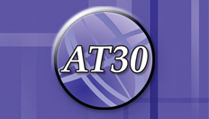 Multinationals using derivatives and applying international financial reporting standards (IFRS) may be in for a surprise this year when it comes to credit value adjustments (CVAs). That’s because the IFRS and US’s general accepted accounting principles (GAAP) differ when it comes to how they treat CVAs and how the agreements are accounted for in cash-flow hedging relationships.
Multinationals using derivatives and applying international financial reporting standards (IFRS) may be in for a surprise this year when it comes to credit value adjustments (CVAs). That’s because the IFRS and US’s general accepted accounting principles (GAAP) differ when it comes to how they treat CVAs and how the agreements are accounted for in cash-flow hedging relationships.
Companies that use the GAAP have been performing CVA calculations for their derivative instruments since Accounting Standards Codification 820, Fair Value Measurement (ASC 820) became effective at the start of 2008. That standard’s international counterpart, IFRS 13, which also holds the same title, became effective January 1, 2013. And although fair value accounting standards under GAAP and IFRS are supposed resemble each other as closely as possible, there’s at least one significant difference related to cash-flow hedge accounting.
According to Daniel Gentzel, director of hedge accounting at Chatham Financial, in accounting for fair value hedges under both standards, CVAs are included in the change in fair value of the derivative but not the fair value of the hedged item. The standards differ, however, in their treatment of CVAs for cash flow hedges.
“That’s really where there is a practice difference between GAAP and IFRS, and it could really catch companies applying IFRS by surprise,” Gentzel said.
Both ASC 820 and IFRS 13 require companies to incorporate credit risk into the calculation of the fair value of derivative instruments, typically accomplished by calculating a CVA, which represents the credit risk of each party to a derivative instrument.
Effectiveness in a cash-flow hedge is calculated by comparing the change in value of the hedging derivative to the fair value of the theoretically perfect hedge, also known as the hypothetical derivative. GAAP assumes that the credit risk in the hypothetical derivative is the same as the credit risk in the actual derivative, because they’re considered to have the same counterparty. Not so under IFRS 13, where changes in the value of the derivative that are attributable to the credit risk of the counterparty drop into “ineffectiveness” and are recognized in the profit & loss statement.
“Potentially you may have to develop a model that incorporates this difference,” said Tony Clifford, head of global IFS financial instruments at Ernst & Young, describing the decision about whether a company will have to develop a model as a “complex area” that will depend on how the firm uses derivatives.
Mr. Gentzel said calculating CVA can be a complicated endeavor. Because many derivatives are bilateral arrangements and can change from being assets to liabilities over time, valuation models used to calculate CVAs should include the current and potential future exposures of the parties to each other under the derivative instrument. Companies also need to be able incorporate estimates of their own credit risk and their counterparty’s in the calculation. Further muddling matters, a company may have multiple derivative exposures to the same counterparty that are part of a master netting arrangement and need to be considered together when calculating the CVA.
Calculating CVA can be a difficult affair even for large corporates, and some may choose to view the CVA calculation as immaterial and make a qualitative assessment rather than one supported by quantitative analysis, even though calculating the CVA is the technically correct action, Mr. Gentzel said.
Both fair value standards require companies to disclose their methodologies to calculate the fair values of their hedges and how credit risk is considered in the calculation.
These issues affect any company using derivatives and preparing IFRS financial statements, such as a European firm engaging in derivative transactions inside of Europe, companies in Asia and other parts of the world that have adopted IFRS, and U.S. companies with subsidiaries preparing GAAP and IFRS statements.
“The challenges associated with properly calculating a CVA and its treatment for cash flow hedging relationships under IFRS could have a very pervasive impact around the world,” Mr. Gentzel said.